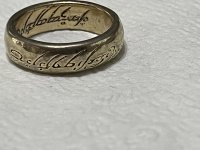http://www.theeuropeanlibrary.org/exhibition-reading-europe/detail.html?id=102975
http://archive.org/details/islariogeneralde00sant
"The Islario (map of islands) is the masterpiece of the Sevillian cosmographer Alonso de Santa Cruz. It was started at the time of Emperor Charles V and was finished in that of his son Philip II, to whom it is dedicated. The Islario was the first time paper was used instead of parchment, which was the most common material for this type of chart. The trace of the maps is more functional, taking less care over the aesthetics than medieval Portolans. This atlas is made up of one hundred and eleven maps that represent the islands and peninsulas of the world, and show all the discoveries made from the 15th century to the mid 16th century... It is highly likely that the Islario General was part of one of an unfinished Universal Geography by Santa Cruz. Alonso de Santa Cruz (1505-1567), cosmographer from the school of Seville, was one of the most representative figures of the Casa de Contratación (House of Trade). It includes an interesting collection of 111 maps of islands, coloured in ink wash."
http://archive.org/details/islariogeneralde00sant
"The Islario (map of islands) is the masterpiece of the Sevillian cosmographer Alonso de Santa Cruz. It was started at the time of Emperor Charles V and was finished in that of his son Philip II, to whom it is dedicated. The Islario was the first time paper was used instead of parchment, which was the most common material for this type of chart. The trace of the maps is more functional, taking less care over the aesthetics than medieval Portolans. This atlas is made up of one hundred and eleven maps that represent the islands and peninsulas of the world, and show all the discoveries made from the 15th century to the mid 16th century... It is highly likely that the Islario General was part of one of an unfinished Universal Geography by Santa Cruz. Alonso de Santa Cruz (1505-1567), cosmographer from the school of Seville, was one of the most representative figures of the Casa de Contratación (House of Trade). It includes an interesting collection of 111 maps of islands, coloured in ink wash."
Amazon Forum Fav 👍
Last edited:





